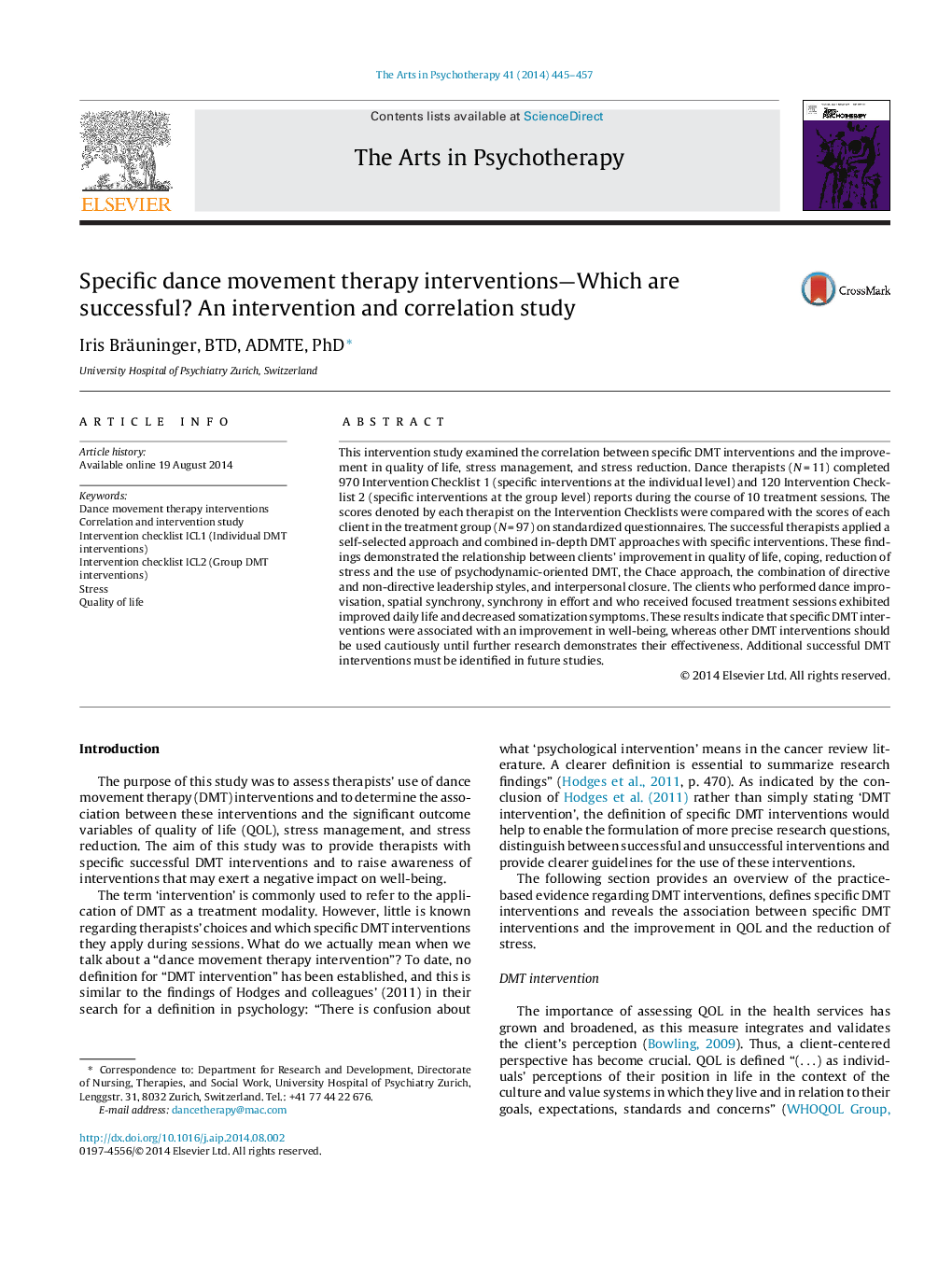| کد مقاله | کد نشریه | سال انتشار | مقاله انگلیسی | نسخه تمام متن |
|---|---|---|---|---|
| 343597 | 617188 | 2014 | 13 صفحه PDF | دانلود رایگان |
• Specific DMT interventions could be identified that relate to the improvement of well-being.
• Dance improvisation, spatial and effort synchrony, and working with a focus were effective individual DMT interventions.
• Improvement of QOL, coping, stress with psychodynamic, Chace DMT, directive-non-directive leading and interpersonal closure.
• A small number of specific DMT interventions should be used cautiously until further research proves their effectiveness.
• 970 intervention checklists on individual and 120 on group DMT interventions were analyzed.
This intervention study examined the correlation between specific DMT interventions and the improvement in quality of life, stress management, and stress reduction. Dance therapists (N = 11) completed 970 Intervention Checklist 1 (specific interventions at the individual level) and 120 Intervention Checklist 2 (specific interventions at the group level) reports during the course of 10 treatment sessions. The scores denoted by each therapist on the Intervention Checklists were compared with the scores of each client in the treatment group (N = 97) on standardized questionnaires. The successful therapists applied a self-selected approach and combined in-depth DMT approaches with specific interventions. These findings demonstrated the relationship between clients’ improvement in quality of life, coping, reduction of stress and the use of psychodynamic-oriented DMT, the Chace approach, the combination of directive and non-directive leadership styles, and interpersonal closure. The clients who performed dance improvisation, spatial synchrony, synchrony in effort and who received focused treatment sessions exhibited improved daily life and decreased somatization symptoms. These results indicate that specific DMT interventions were associated with an improvement in well-being, whereas other DMT interventions should be used cautiously until further research demonstrates their effectiveness. Additional successful DMT interventions must be identified in future studies.
Journal: The Arts in Psychotherapy - Volume 41, Issue 5, November 2014, Pages 445–457
